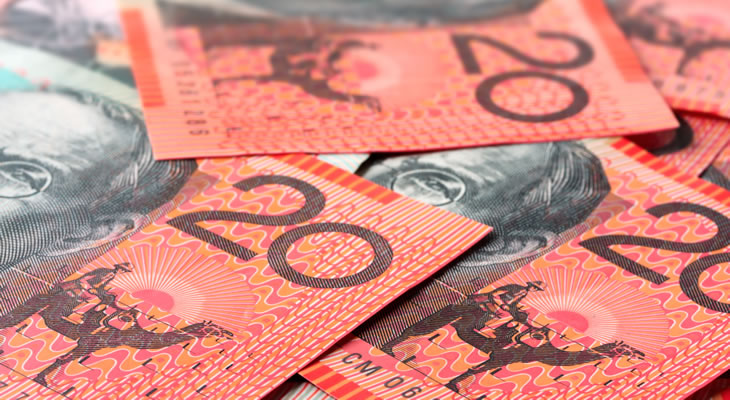On Thursday morning the GBP/AUD currency pair continues to gain ground in the region of 2.1922, as pundits remain optimistic ahead of the UK’s BBA Loans for House Purchase figure.
Earlier…
The ‘Aussie’ (AUD) is suffering from a fresh round of risk aversion this morning after the latest Chinese Manufacturing PMI revealed significantly slowing production.
Widening UK Deficit Sent GBP/AUD Conversion Rate on Downtrend in spite of Hawkish Comments from Fed Policymakers
While the second quarter Australian House Price Index revealed substantially greater growth than forecast on Tuesday, at 9.8% instead of 8.0%, this was overshadowed by the return of Fed rate rise speculation. President of the Atlanta Fed Dennis Lockhart has proved particularly hawkish this week with comments that the Federal Open Market Committee (FOMC) may still opt to raise interest rates before the end of the year. With risk aversion on the rise once more the ‘Aussie’ (AUD) was thus weighed down in spite of this strong domestic data.
A higher-than-forecast UK Public Sector Net Borrowing figure for August, meanwhile, saw Sterling (GBP) enter a downturn across the board yesterday, as investors were inclined to dial back forecasts of a near-future Bank of England (BoE) interest rate rise. With government borrowing rising to 12.1 billion Pounds from 0.7 billion in the previous month this proved a worrying indicator of the current health of the domestic economy. Given other recent UK data disappointments, this increased national deficit strongly counteracted the more hawkish tone of BoE policymakers who had continued to make the case for a hike in the first quarter of 2016. Consequently, the GBP/AUD conversion rate slumped to a low of 2.1671.
Shrinking Chinese Manufacturing Output is Putting Pressure on the ‘Aussie’ (AUD) Today, Sluggish Pound (GBP) Capitalises
Although this morning saw the Australian Conference Board Leading Index for July projecting positive economic growth, it was not long before the release of a disheartening Chinese Manufacturing PMI undercut the antipodean currency. Demonstrating that manufacturing production in the world’s second largest economy is falling at its fastest rate in six years, this latest contraction spurred another round of general risk avoidance as traders were quick to move away from the more vulnerable commodity-correlated currencies today. Caught between the continuing economic slowdown of China and the threat of the hawkish Fed, the ‘Aussie’ has now been pushed into another strong slump against the majors.
GBP/AUD Exchange Rate Forecast: Sterling Could See Resurgence on Improved UK Home Loans Data
The only major remaining data release this week for the UK will be tomorrow’s BBA Loans for House Purchase figure, which is anticipated to print at an increase for August. Should forecasts prove accurate this may give the Pound a more substantial boost, allowing the GBP/AUD pairing to make greater gains on the back of renewed BoE rate decision bets.
With Australian data thin on the ground over the coming days it is likely to be US data that has the greatest impact upon the South Pacific currency, with any further support for a 2015 Fed rate hike sure to cause another decline. Thursday’s Durable Goods Orders in particular could prompt some heightened movement for the ‘Aussie’, should it come in at a contraction as predicted there could be a rally in store.
Current GBP, AUD Exchange Rates
At time of writing, the Pound Sterling to Australian Dollar (GBP/AUD) exchange rate is climbing at 2.1738, with the Australian Dollar to Pound Sterling (AUD/GBP) pairing in a slump around 0.4600.


Comments are closed.